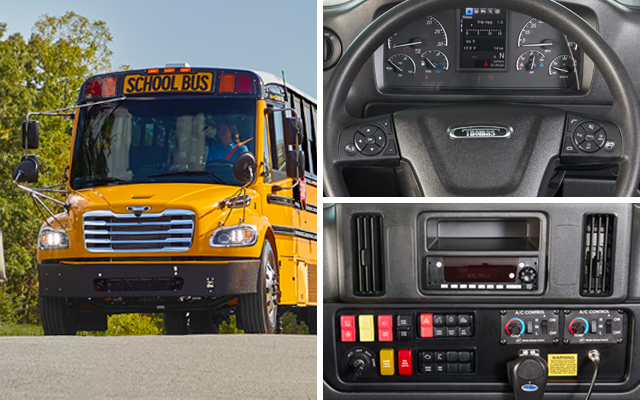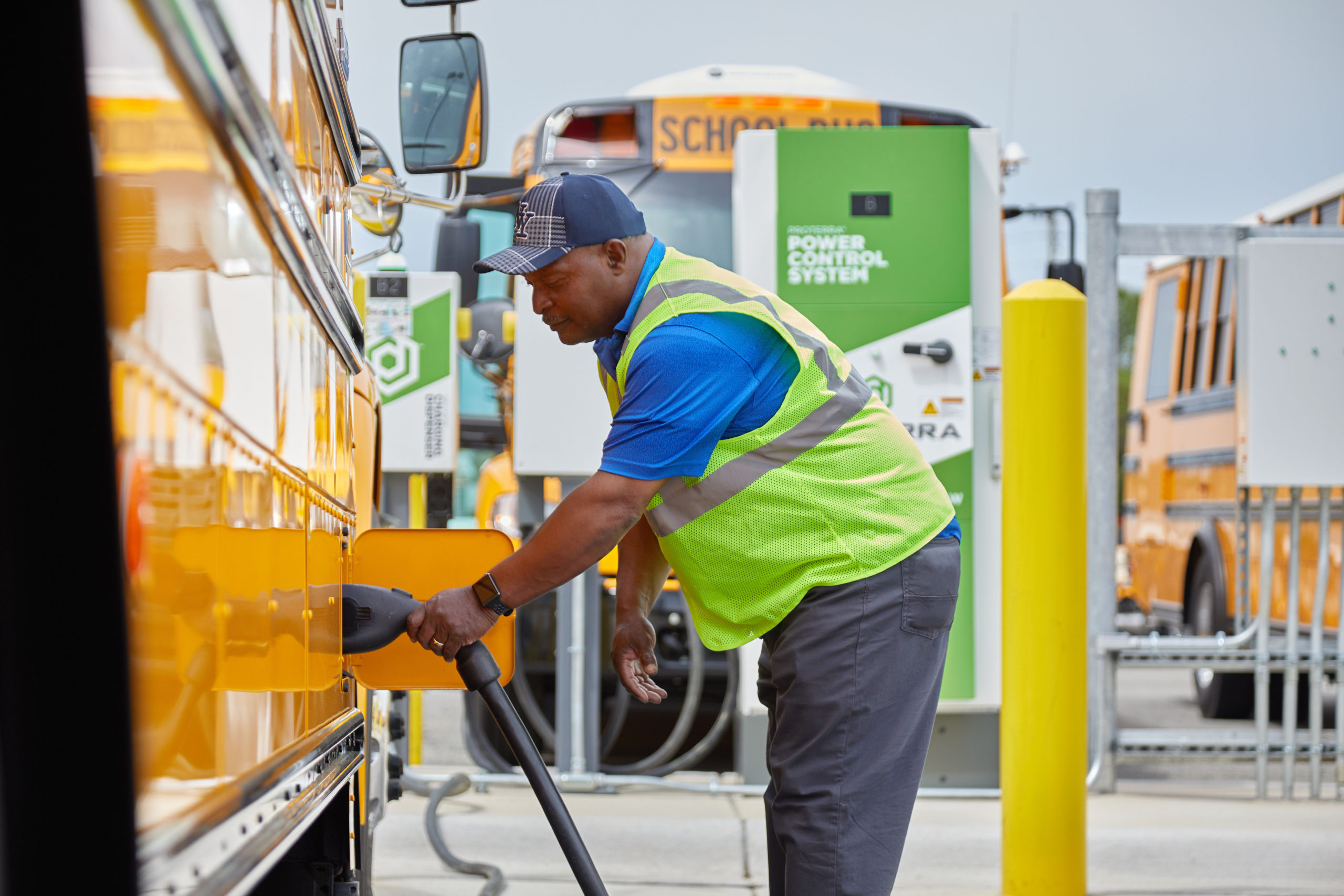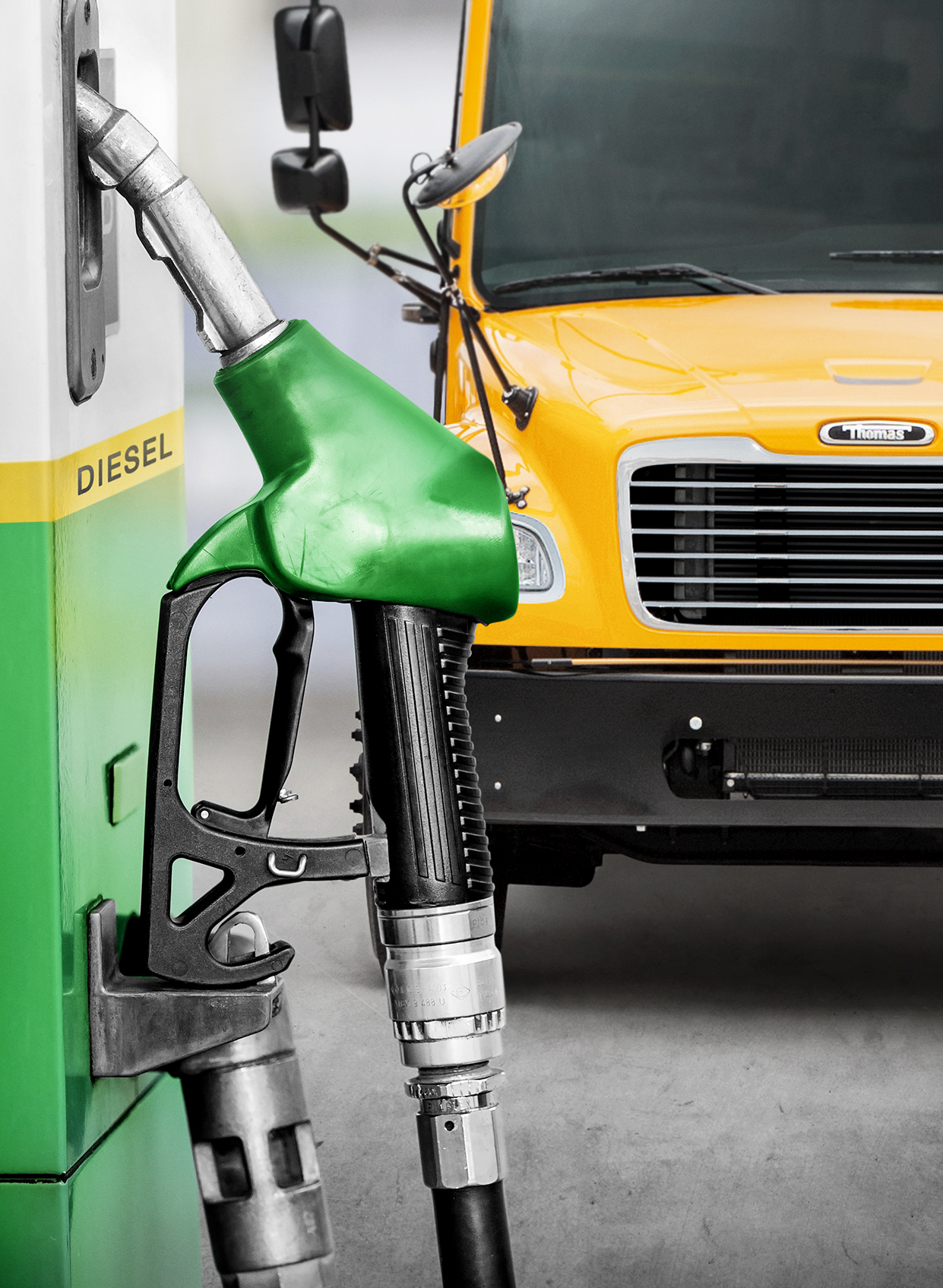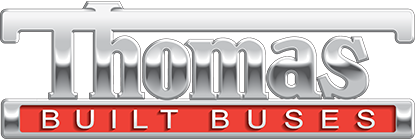
In today’s rapidly evolving industrial landscape, sustainability has become a global focus. But what does that even mean? For Thomas Built Buses, it’s about defining our commitment to our organization, our industry and the communities we serve. While our electric school bus, the Saf-T-Liner® C2 Jouley®, and its many milestones (including the recent delivery of our 1,000th) often come to…

Upgrading the C2’s User-Experience for a New Era of Drivers
Student safety is in the hands of school bus drivers. The more comfortable and confident drivers feel, the more safely they drive.
For the last 20 years, Thomas Built Buses has supplied the industry with advanced electronics engineered with safety prioritized in every detail. Our Saf-T-Liner® C2 was designed…

As electric school buses continue to gain momentum across the U.S. through federal incentives like the EPA’s Clean School Bus Program, school districts are looking for help in transitioning their traditional bus fleets to electric, including building out electric vehicle (EV) infrastructure.
Building and implementing charging infrastructure can be a daunting task, with challenges…

From Kendra Eads, VP of Engineering and Technology at Thomas Built Buses
As we gear up for the back-to-school season, it’s important to recognize the significant advancements in school bus technology that enhance the safety and well-being of our students during their daily journeys.
At Thomas Built Buses, our commitment to safety is evident in our mission and…

It’s an ongoing debate: which fuel type provides the lowest total cost of ownership (TCO) to districts. Opinions abound on all sides of the issue.
A gasoline-powered bus has a low initial purchase price, propane fuel costs much less than clean-diesel and, while compressed natural gas (CNG) buses have a high initial purchase price, advocates contend that, after the initial cost is recouped, the savings on CNG fuel contribute to a low total cost of ownership.
But which is correct? The problem with determining the total cost of ownership of any fuel type for a bus is that, in most cases, not all factors are considered. This creates one-sided arguments and speculations. But when all factors are considered, clean-diesel provides the lowest total cost of ownership over the lifetime of a bus. Here’s why.
Fuel Cost
The more efficient the engine, the less fuel it burns and the further it travels on a single gallon of fuel. So even if one type of fuel is less expensive per gallon-equivalent (like gasoline or propane), the efficiency of that engine type may negate the savings.
Clean-diesel is the most energy-efficient fuel type, which means that it outperforms other fuels in operating range and fuel economy per gallon of fuel. On average, a clean-diesel school bus can travel approximately 510 miles on a tank of diesel vs. only 270 miles on gasoline, based on the same standard-sized fuel tanks. Newer engines, like the Detroit™ DD5™ and DD8™ diesel engines, show an additional three percent increase in fuel efficiency. This difference in range and fuel economy quickly mitigates the cost difference between gasoline and diesel fuel.
Diesel always has been and remains the most fuel-efficient engine (due to more BTUs), providing nearly 90 percent better fuel economy and a longer operating range than any other similar-sized gasoline, propane or compressed natural gas (CNG) engines. Plus, new technologies and innovations like the Detroit DD5 engine can help you achieve even greater fuel economy and lower fuel costs down the road.
Maintenance
Diesel engines are longer-lasting, durable, reliable and hard-working. With a clean-diesel school bus, not only will you have peace of mind with reliable buses on the road, you’ll also save money on maintenance costs. Today’s clean-diesel engines, like the Detroit DD5 and DD8, offer the longest service intervals in the industry with up to 45,000-mile* oil and fuel filter change intervals, which means lower ongoing maintenance costs. Plus, with new engine technology, aftertreatment issues are now a thing of the past.
Diesel engines last 15- 20 years, two to three times longer than their propane and gasoline counterparts. Even with a lower acquisition cost, most districts will have to replace their propane or gasoline engines several times during the life of the bus. Again, once all factors are considered, diesel comes out on top.
Capital Cost and Resale Values
The capital cost of a school bus is the most prominent aspect of the total cost of ownership equation. Many fleets select the cheapest bus without weighing the cost of owning that bus down the road or selling it at the end of its lifecycle. In the long run, the lowest initial cost option may not be the most cost-efficient overall.
For instance, there are vast differences in the resale value of school buses. Clean-diesel has the highest resale value in the market today. The large resale market for clean-diesel just doesn’t exist for gasoline, propane or compressed natural gas-powered buses.
It’s important to weigh the pros and cons of a specific fuel type based on your unique needs. And it is just as important to consider every aspect of the total cost of ownership to make the best decision. When all factors are considered, clean-diesel has the lowest total cost of ownership for a fleet.
When examining the TCO of your school bus purchases, challenge past assumptions, ask tough questions and keep an open mind. You may be surprised by what you learn.
*Or 12 months or 1,500 hours, whichever comes first.
